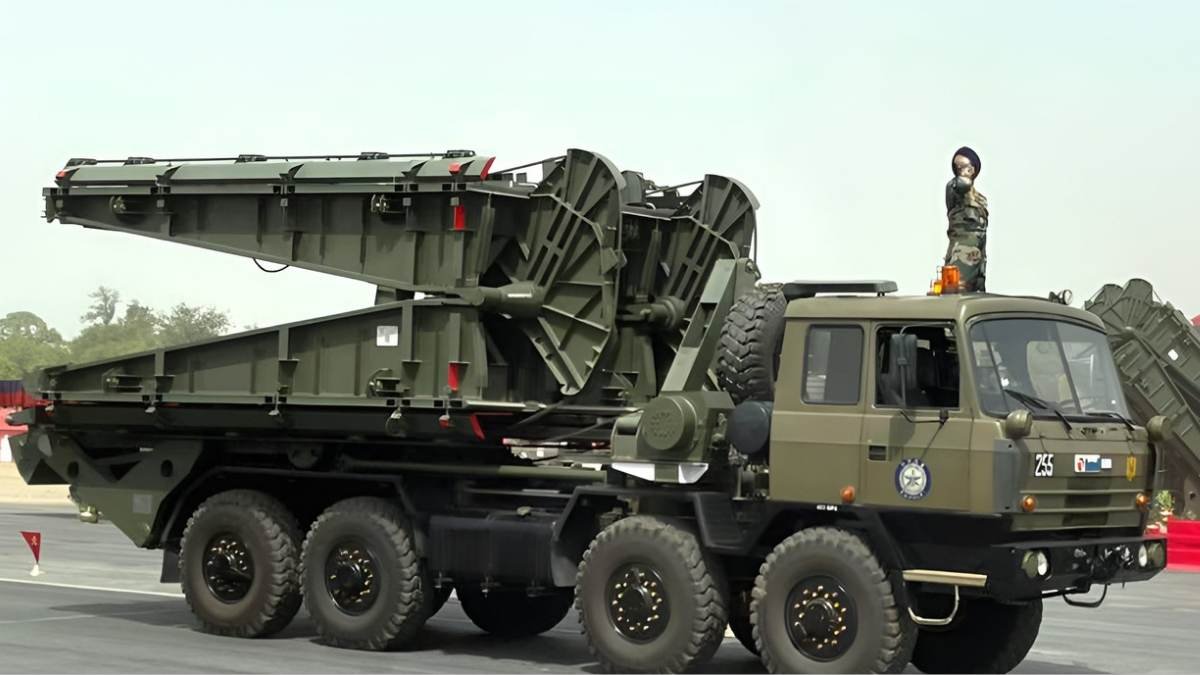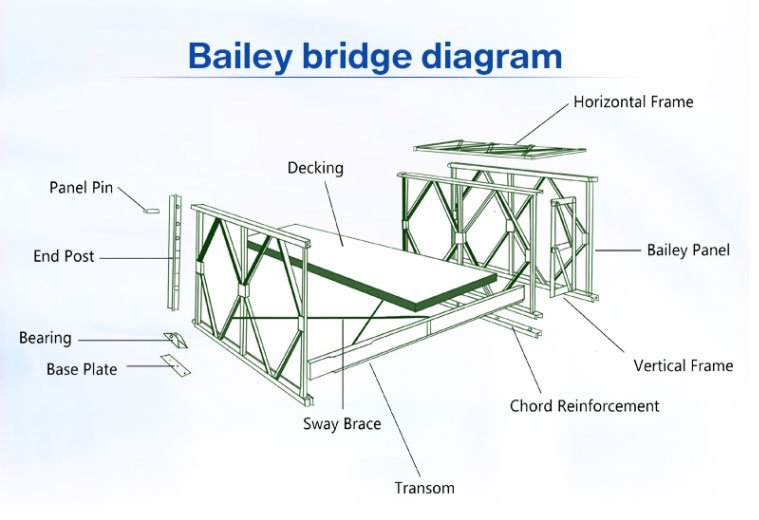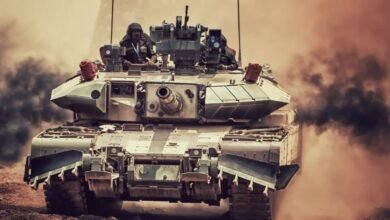Bridging Systems: A Battle-Winning Technology?

Hello defence lovers! Building bridges is a very crucial role for sappers in armies around the globe. Several battles had been fought over the control of bridges. In this article, we are going to discuss various bridging systems used by armed forces to bridge over challenging terrains.
Introduction

Bridges play a crucial role in warfare as they are essential for military forces to move troops, equipment, and supplies across rivers, valleys, and other natural barriers. Control of bridges can be the key to victory or defeat in many battles.
In modern warfare, bridges are also critical for the transportation of heavy military vehicles such as tanks, which can’t cross rivers or other bodies of water without the help of a bridge. This makes bridges a valuable strategic asset for military commanders.
To gain control of a bridge, armies may resort to various tactics, such as launching surprise attacks, sabotage, or direct assaults. Bridges may also be destroyed by retreating forces to slow down the advancing enemy.
Thus bridges are essential for the movement of troops and equipment in warfare, and their control can be a significant strategic advantage. Therefore, they are often targeted or defended with great effort in military operations.
Various Types of Bridging Systems
There are several types of bridging systems used by armed forces, which can be broadly classified into two categories: fixed and mobile bridges. Fixed bridges are permanent structures built over rivers or other water bodies, and they are usually made of concrete or steel. They can withstand heavy loads and are often used for civilian and military purposes. However, they are not suitable for rapid deployment and mobility, which is necessary for military operations. Mobile bridges, on the other hand, are temporary structures that can be quickly deployed and moved to different locations as needed. Mobile bridges are very crucial as they are the backup when permanent bridges are destroyed.
In this article, we will discuss mainly three bridging systems:
- Pre-Fabricated Bridge (Bailey, Mabey, MGB etc)
- Pontoon Bridge
- Mechanised Bridge/Armoured vehicle-launched bridge
Bailey Bridge

The Bailey bridge is a type of portable, pre-fabricated, truss-type bridge that was designed by the British engineer Sir Donald Bailey in 1940. It was widely used by Allied forces during World War II and is still used by many armed forces today.
The Bailey bridge is made up of standardized, interchangeable components, which can be easily assembled by soldiers without any heavy equipment or machinery. The main components of the bridge are the panels and transoms, which are made of steel. The panels are rectangular in shape, with diagonal bracing members to provide stability. They are bolted together to form the deck of the bridge, which can be up to 200 feet (61m) long and can support heavy loads. The transoms are horizontal beams that are placed perpendicular to the panels and are used to transfer the load from the deck to the abutments or piers. The transoms are supported by vertical posts. Footways can be installed on the outside of the side panels. The side panels form an effective barrier between foot and vehicle traffic, allowing pedestrians to safely use the bridge.

The Bailey bridge is designed to be strong, durable, and easy to assemble and disassemble. It can be transported by truck or helicopter and can be set up quickly in emergency situations, such as during military operations or natural disasters.
The Bailey bridge has been used in many conflicts around the world, including the Korean War, the Vietnam War, and the Gulf War. It has also been used for civilian purposes, such as for temporary bridges in remote areas or construction projects.
Nowadays, there are various other pre-fabricated bridge designs which are much stronger than the bailey bridge. Some examples are Mabey Bridge, Medium Girder Bridge (MGB) etc. However, Bailey was the pioneer who developed this concept of the pre-fabricated bridge for combat engineers.
Pontoon Bridge

A pontoon bridge is a type of floating bridge that uses pontoons or floating platforms to support a roadway or bridge deck. It is a temporary structure that can be quickly assembled and disassembled and is commonly used to cross bodies of water, such as rivers and lakes.
In military engineering, pontoon bridges play a crucial role in providing temporary access across water obstacles, such as rivers, lakes, and swamps. They are a key component of military bridging operations, providing troops with the ability to move across water obstacles quickly and efficiently, and helping to facilitate the movement of supplies, equipment, and vehicles.

One of the key advantages of pontoon bridges in military engineering is their rapid deployability. They can be quickly assembled and disassembled, allowing military forces to move rapidly across water obstacles in a wide range of operational scenarios. Additionally, pontoon bridges are highly versatile and can be configured in a range of different bridge configurations to suit specific operational requirements.
Pontoon bridges are also highly durable and reliable, with many designs capable of supporting heavy loads and rough terrain. They can be anchored in place using various anchoring systems, such as cables, chains, or anchors, to ensure stability and safety during use.
Mechanised Bridge/Armoured vehicle-launched bridge
An Armoured Vehicle-Launched Bridge (AVLB) is a type of military vehicle designed to rapidly deploy a bridge over a water obstacle or other gap in terrain. AVLBs are often used by combat engineers or other military units to provide a temporary crossing for troops, equipment, or vehicles.
The AVLB is typically mounted on a tracked or wheeled armoured vehicle and consists of a bridge launcher and a bridge itself. The launcher is designed to rapidly deploy the bridge across the gap and can be operated remotely from the armoured vehicle.

AVLBs are typically used in combat engineering operations and are often deployed in advance of ground troops to establish crossing points and facilitate the movement of military forces across challenging terrain. They can sustain heavy loads such as main battle tanks. They are particularly useful in situations where traditional bridging equipment may be unavailable or difficult to deploy, or all bridges had been destroyed by the retreating enemy forces.
Bridge laying tank (BLT) is a specific type of AVLP where the mechanised bridge is mounted on the hull of a main battle Tank. Indian Army uses bridge-laying tanks based on the hull of T-72 MBT and Arjun MBT. DRDO has also developed a specialized bridging system called Sarvatra.
DRDO Sarvatra

The DRDO Sarvatra (Sarvatra Multi-span Mobile Bridge System) is a truck-mounted, multi-span, mobile bridging system developed by Armament and Combat Engineering Systems (ACE) and Research and Development Establishment (R&DE) Engineers of Defence Research and Development Organisation (DRDO) for the Indian army.
The Sarvatra is a 75 meters long multi-span mechanised bridging system consisting of five scissors bridges made of aluminium alloy with a span of 15 meters each mounted on separate mobile platforms. Each mobile platform is a modified Tatra T-815 VVN 8 x 8 chassis, drivable from both ends by having an additional small cabin with required driving controls. Further, a microprocessor-based control system is utilised to deploy and operationalise the entire system in less than two and a half hours. A 20 m variant of the Sarvatra bridge system capable of bridging a gap of 100 meters has also been developed.
Also Read, Explained: All Mobile Bridging System Developed By DRDO
Conclusion
In conclusion, bridging systems play a crucial role in military operations, allowing troops to quickly and efficiently move across water obstacles and other challenging terrains. Whether it is the pontoon bridge, Medium Girder Bridge (MGB), Bailey Bridge, or Armoured Vehicle-Launched Bridge (AVLB), each of these systems provides a unique capability that can be tailored to specific operational requirements. As military forces continue to face new challenges and threats, bridging systems will continue to play a key role in facilitating the rapid and efficient movement of troops, equipment, and supplies across challenging terrain, enabling military forces to accomplish their mission and achieve their objectives.





